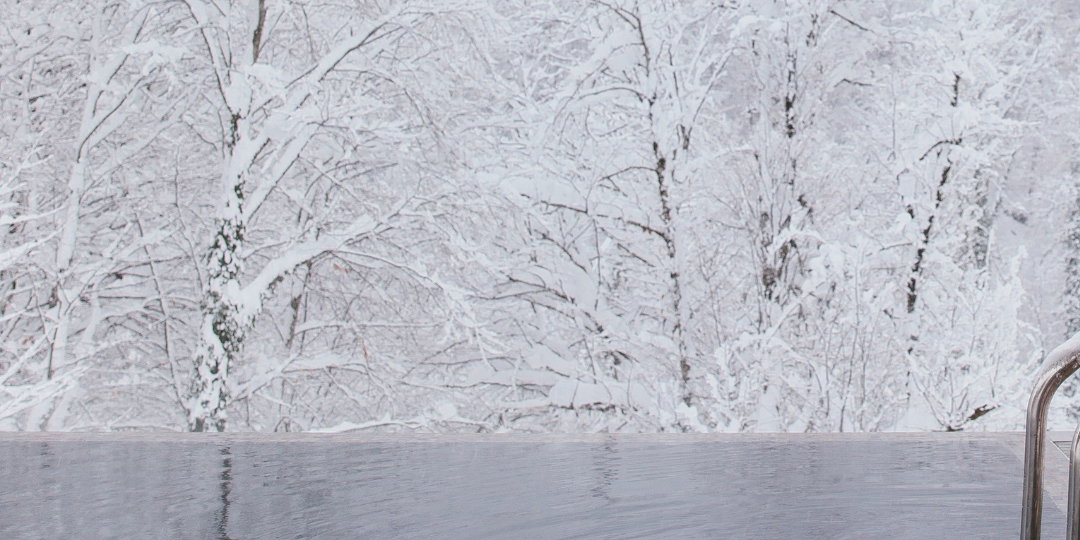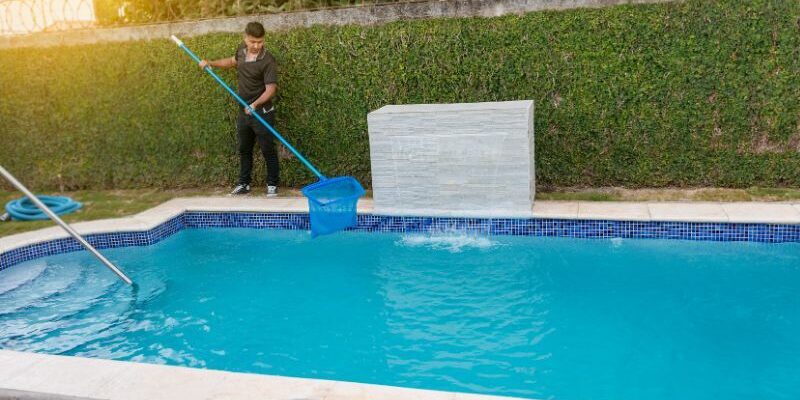The off-season for pools, typically the fall and winter months, is an important time for maintenance and preparation to ensure your pool is ready for summertime enjoyment. While it may be tempting to completely neglect your pool until the warm weather returns, taking the time for proper winter pool maintenance will save you time, money, and headaches. This comprehensive guide covers everything you need to know about keeping your above-ground or in-ground pool in top shape over the colder months.
Why Winter Pool Maintenance Matters
When temperatures drop and the pool season winds down, you can remember about your pool next summer. Winter pool maintenance is crucial for several reasons:
- It prevents water damage from freezing temperatures. Stagnant water left in pipes and pumps can expand as it freezes, causing cracks and leaks. Proper winterization protects from costly repairs.
- It avoids algae growth – Warm, untreated water provides the perfect conditions for quickly spreading green, black, or mustard algae. This can be a nightmare to clean up come spring.
- Saves time and money – Taking preventative steps reduces major maintenance and chemical costs later to get your pool swimmable again.
- It extends the lifespan of your pool. Routine care protects the integrity of your pool liner, surfaces, and equipment from deterioration.
- Ensures a smooth opening – Thoroughly closing your pool and monitoring it over winter makes bringing it back to life next season quick and easy.
So, while pool maintenance may not be top of mind once it gets cold out, staying on top of these off-season tasks will save you big time when warmer weather returns.
Maintaining Pool Water Chemistry in the Winter
Balanced water chemistry is crucial year-round to keep your pool in good condition. Fluctuations in temperature and environment over the winter make maintaining proper chemical levels especially important.
Here are key steps for handling pool water chemistry over the winter:
- Monitor alkalinity, pH, and chlorine levels. Even with a cover, periodically check the water composition using test strips. Ideally, this should be done monthly. Top up chemicals as needed when the pool is not frozen.
- Only Safety covers would need to be shocked and only just before the snow covers the pool completely blocking out the sun. Algae cannot grow without sunlight. Other types of covers completely block sunlight, so will never need chlorine added.
- Use only fast-dissolving chemicals. With the circulation system off, chemicals dissolve slowly. Stick to fast-acting liquids that won’t settle on pool surfaces: no tablets or sticks.
- Add chemical when needed and use a brush on a pole to stir the water as best as possible for 10 minutes.
Staying on top of your pool’s water chemistry over the winter will make reopening much smoother next season. No one wants to deal with a swampy, algae-filled mess come spring!
Handling Pool Covers

Pool covers are essential for off-season protection, but they do require maintenance themselves throughout the winter.
For mesh safety covers:
- Keep leaves and debris clear. Use a pool brush and/or leaf blower to remove any accumulated organic matter so it doesn’t end up in the water.
- Covers are not water tight. Water will always drain into the pool.
- Re-tighten straps. Wind and weather can loosen the cover fastening straps. Snug them up over the winter as needed if the cover appears to be sagging.
- Ensure all springs stay securely attached to the anchors around the pool deck to keep the cover firmly in place. Check attachments regularly.
- Before the pool freezes, peel back a corner of the cover on the deep end and pour in a jug of liquid chlorine. This prevents contamination over the winter months.
- Closely manage the water level before and after the pool freezes to keep it below the liner bead. Too high a level allows water behind the liner, which will cause it to float
For solid vinyl covers:
- Prevent standing water. Use a cover pump and siphon to keep water from accumulating. Water promotes liner-staining algae growth.
- Watch for cracks. Inspect the cover periodically for holes or tears that allow contamination and evaporation. Patch small tears.
- Keep edges secure. Strong winds can lift the cover edges and whip the liner underneath, causing damage. Check edges stay anchored.
- Remove collected debris. Use a pool brush or net on a pole to remove any leaves, dirt, or gunk that falls on the cover over the winter.
For tarps with waterbag covers:
- Check that all water bags stay half filled and haven’t leaked.
- Ensure waterbags remain around the pool perimeter with the cover tucked under them. Don’t let them shift or roll away from the pool’s edge.
- Ensure adjacent waterbags are touching each other, eliminating gaps where the cover could come loose.
- Inspect the cover routinely for holes or tears that would allow it to sink deeper into the water. Patch any holes.
- Maintain the water level on top of the cover at around 4 inches. Pump off any excess accumulation.
For vinyl hanging covers:
- Verify the cover stays in the track and hasn’t come out of the roller system. Re-hang if needed.
- Keep the water level on top of the cover at 4 inches or less to prevent overstressing the hanging vinyl.
- Check regularly for holes or tears in the vinyl that allow the cover to sag and dip into the water.
Proper pool cover maintenance is as important as caring for the water during the off-season. Keeping it clean, secure, and clear of excess water prevents many issues.
Monitoring Throughout Winter

Your pool maintenance continues completely once you close it up for the winter – periodic inspections are necessary over the cold months – even when not buried in the snow.
- Do a walkaround every two weeks. Inspect the pool, cover, and surrounding area every couple of weeks. Look for any issues like slipping covers, damage, vandalism, etc.
- Check the water level monthly. Cold temperatures and a covered pool lead to evaporation. Ensure the water level has stayed high over winter. The ideal level is halfway up skimmer openings. Water level decreasing could be caused by a leak and cause structural damage if not addressed.
- Test water chemistry monthly. Dip test strips beneath the cover to check chlorine, pH, and alkalinity levels. Top up chemicals as needed to maintain proper balance through the winter – before freeze, and after Spring thaw.
- Make adjustments as required. Address any issues like leaks, low chlorine levels (mesh safety covers), cover damage, etc., as soon as possible to prevent bigger problems later.
Staying vigilant with winter pool maintenance prevents small issues from becoming huge headaches that delay opening your pool in spring.
Keep Your Pool Party-Ready with Winter Pool Maintenance
The off-season gives pool owners the perfect opportunity to complete winter pool maintenance that ensures their pool stays in top shape when out of use. While not the most exciting work, properly closing, monitoring, and reopening your pool over the winter will pay off exponentially once those hot summer days roll around again.
With the tips above, you can relax knowing your pool will be in its best shape and party-ready as soon as possible when spring arrives. Don’t let all your hard work go to waste – a little off-season attention goes a long way.
For professional pool closing and opening services, check out our services available at Coastal Pools today!




